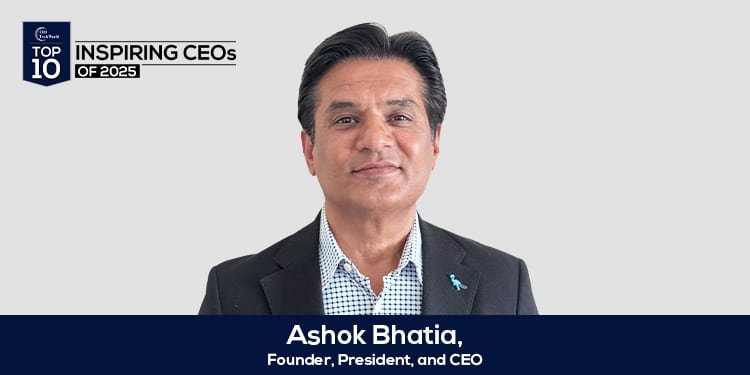The word Innovate comes from the Latin word Innovatus which is the past participle of innovare meaning “to renew, restore”, and also “to change”. It also connotes “bring in new things”. We’ll primarily allude to this in this case, looking at APIs and Innovation. We’ll look at the API economy and how APIs have brought in new things. New things in the sense of new players in the economy, new ideas, solutions, ways of thinking, and all in all, new ways of living.
Let us take a step back and look at the world before the digital dawn. A world where innovation flickered like isolated campfires, disconnected and dim. Where the digital wheels were being reinvented whenever one had an idea to improve any system or think of building upon an existing one. Picture a brilliant fintech solution in Bengaluru, stranded on an island of proprietary data, unable to tap into the needed data. Or a healthcare platform in America with a life-saving potential stifled by silos of data. Closer to home, a Kenyan farmer cultivates bountiful harvests, yet their wealth remains trapped, shackled by a banking system that speaks only the language of dusty ledgers and brick-and-mortar branches. This was the pre-API landscape – a fragmented patchwork of potential yearning for collaboration.
API Economy

Then, a revolution emerged. Not one with a bang but with a whisper. The whisper of APIs. An API – Application Programming Interface – technically defined, is a set of functions and procedures allowing the creation of software applications that access the features or data of an operating system, application, or other service. Anxway explains an API Economy as simply the use of APIs in the digital economy. This in turn helps companies embark on a digital transformation strategy to achieve integration and drive better and new services quicker (Anxway, 2023).
“API economy is about how companies can work together to create more value than either of them could independently.”
The API economy is about how companies can work together to create more value than either of them could independently. With APIs, a ride-hailing mobile application can leverage the existing maps APIs. More and more companies can collaborate and expand their businesses and provide excellent customer service by leveraging each other’s data via APIs without having to build their own systems.
With this, multitudes of industries transformed, and micro changes happened. The boom of mobile money, the emergence of Open Banking, the success of Fintech, increased financial inclusion, and everything else enabled by the power of collaboration across industries and continents.
Mobile Money

Across the bustling streets of Nairobi, the rhythmic tap-tap-tap of a smartphone vibrates a message of financial freedom. A farmer in rural Kenya receives payment for their latest harvest, deposited seamlessly into their M-Pesa account. This scene, once unimaginable, is now commonplace, orchestrated by the invisible but potent force of APIs.
Launched in 2007, Safaricom’s M-pesa, a mobile money platform, revolutionized the financial landscape. It transformed simple phones into mobile wallets, empowering millions with the ability to send, receive, and save money with ease. With its open API architecture, Safaricom unlocked its core functionalities through APIs inviting innovators to co-create a digital ecosystem unlike any other.
From fintech startups to established businesses, developers flocked to leverage the power of M-Pesa APIs. Lending platforms emerged, offering micro-loans to farmers and entrepreneurs. Savings initiatives were built, empowering rural communities with financial security. More relatable, online shopping became accessible through the tap of a phone. Each of these is a result of an API connection. M-pesa goes beyond financial services. Safaricom’s API Platform, Daraja, opened innovation portals for agriculture, healthcare, and education, just to mention a few. Lipa na Mpesa stands out as it facilitates cashless transactions across businesses. Through Daraja API, many businesses have integrated with M-Pesa and have been able to profit from it. One example is Twiga Foods, a mobile supply platform for fruits and vegetables. Daraja API acts as a translator between M-Pesa and Twiga Food’s system. It enables Twiga Foods to deploy Customer to Business (C2B) and Business-to-Business (B2B) functionality. Just like Twiga Foods, the Daraja API has enabled other innovative businesses in other industries.
This not-so-small ecosystem shows the transformative power of collaboration. Safaricom provided the platform, APIs acting as bridges, and the businesses and developers brought their ingenuity to build solutions that addressed specific needs.
The story of Safaricom and APIs is not just about technology, it’s about human transformation. It is about farmers in Kenya securing financial independence, home based businesses doing business and getting paid online as well as growing businesses to keep track of their finances by incorporating online payments. It shows the power of technology and innovation in making lives better.
Open Banking

On the side of banking, the banks, once guarded fortresses, threw open their data vaults empowering customers and innovators to co-create the future of finance, giving rise to Open Banking. With the consent of their customers, banks are able to share their financial data to third parties via APIs to leverage on the data and provide personalized experience. Take Kenya’s Equity Group, for example, and its subsidiary Finserve. Through its money management platform, Equitel, Finserve launched the Jenga API to provide an integrated platform for businesses to send money, buy, pay, manage their accounts, manage credit, withdraw, and conduct Know Your Customer (KYC), Credit Reference Bureau (CRB) and Anti-Money Laundering (AML) queries (Mutunga. A., 2019). After launching the Jenga API in the third quarter of 2018, according to Equity Group Holdings Plc Investor Briefing Q1 2019 performance report, the new platform was able to record over 2,000 businesses, large and small, using the platform to automate their back-end system, provide multiple payment options to their customers, and expand their revenue streams.
According to a piece published by Mastercard, Open Banking, simply put, gives you the ability to share your financial accounts’ data to access innovative financial service experiences. Traditionally, only you and your bank could access your financial data. Open Banking allows you to share that data with another financial service provider – either a different financial institution or third party, to empower you to use your own data for your own benefit. These third-party providers can include a wide range of fintechs, currency exchanges, merchants, and other digital platforms (Harrison, H., 2022).
Open banking is known to be so subtle in its impact that most people don’t realize they are using it. According to Mastercard’s 2022 New Payments Index, a global consumer survey of 35,040 respondents in 40 countries reveals that more people are using open banking than they realize; only about half know about open banking, but about two-thirds are actually using it to pay their bills, do their banking and make buy now, pay later payments. Utah-based open banking platform, Finicity, which was acquired by Mastercard, connects with more than 10,000 financial institutions. Through the platform, consumers and small and mid-sized businesses give their permission to use their data, which can then be packaged for other companies to power their services. This shows the scale at which Open Banking allows for collaboration and ease of Innovation by allowing usage of data across businesses.
Open Banking, an innovation brought about by APIs, enables digital transformation by transforming how customers’ needs are met, creates room for innovation as it opens more doors to competition, increases efficiency, allows for the exploration of new business models, and enables access of services for people who were previously excluded.
Embedded Finance

Talking of how ubiquitous APIs are, we venture into Embedded Finance. Embedded finance is where Non-traditional financial platforms are offering financial services to consumers or businesses. In simpler terms, embedded finance happens when a company that is not a bank or financial institution offers financial products from loans and micro loans to insurance and payment solutions.
Nigeria’s Omnibiz Connect partnered with OnePipe to eradicate cash payments. They leveraged embedded finance by offering a Buy Now Pay Later (BNPL) service, which currently enables qualified retailers to extend their business. This is an amazing case of Embedded Finance where a company whose focus was nowhere close to financial services offered BNPL. This is a win-win scenario where businesses attract and retain customers by offering value-added financial experiences while banks and fintechs expand their reach and tap into new customer segments without incurring the cost of building their own platforms.
The innovation brought by Embedded Finance is not merely a trend. It is a fundamental transformation in the way we interact with finance. It democratizes access, removes friction, and paves the way for a world where financial services are as ubiquitous and user-friendly as the air we breathe. For those who grasp its potential and embrace the API-driven collaborative spirit, embedded finance presents an unparalleled opportunity for innovation and redefining our financial lives.
The Future of APIs
Where Embedded Finance shows us the power of APIs in allowing non-financial institutions to cater to the financial aspects of their customers, APIs have the power to allow for a holistic interconnectedness in our personal and social lives. APIs won’t just connect websites and apps, they are powering the world of the Internet of Things (IoT) with Billions of sensors, actuators, and smart devices whispering their data through API portals, enabling cities to learn, cars to talk, and homes to be personal paradise filled with automation.
“We have heard of data being the new oil. In the case of APIs, data is the fertilizer for innovation.”
We have heard of data being the new oil. In the case of APIs, data is the fertilizer for innovation. With the right data from the right sources integrated with Machine Learning technologies, a whole new world of insights is presented allowing for quality and faster decision-making saving lives and economies.
What Does All This Mean?
“In the end, the future is not about technological prowess, but about the connections we forge, the problems we solve, and the lives we impact, one API call at a time.”
For technologists, APIs unleash creativity. Allowing developers to build on existing platforms, mixing and matching features, and composing entirely new solutions. With APIs, developers can focus on the things that truly matter and let everything else be handled by other existing data and infrastructure via APIs. Today, you can build a whole solution by connecting with various other applications via APIs to provide customers with a unique product that fits their needs.
For business leaders, APIs are gold mines of opportunity. They open doors to untapped markets, connecting business leaders with a global audience like never before.
For the common man, APIs are invisible magic that simplifies and enriches daily life. From ordering groceries with a voice command to accessing healthcare advice on a smartphone, APIs power the systems that make life seamless.
So, the next time you marvel at a seamless app experience, remember the silent symphony of APIs playing in the background. They are the unseen heroes of Innovation, empowering everyone from tech wizards to farmers to make their mark on the world. Join the chorus, learn the language of APIs, and become part of the revolution where technology truly serves humanity. In the end, the future is not about technological prowess, but about the connections we forge, the problems we solve, and the lives we impact, one API call at a time.
Read more articles:

With over two decades of experience in the technology and banking sectors, I’ve led digital transformation projects from the front lines. In addition to other entrepreneurial ventures, I founded and currently run FinSense Africa—a FinTech company that guides banks and other institutions through their digital transformation journeys, with APIs at the core of these transformations.
My focus is on the digitalization of the service industry, empowering organizations with modern, affordable technology that enables automation, collaboration, integration, and innovation. This approach ensures flexibility, enhanced security, and improved intelligence across their operations.








